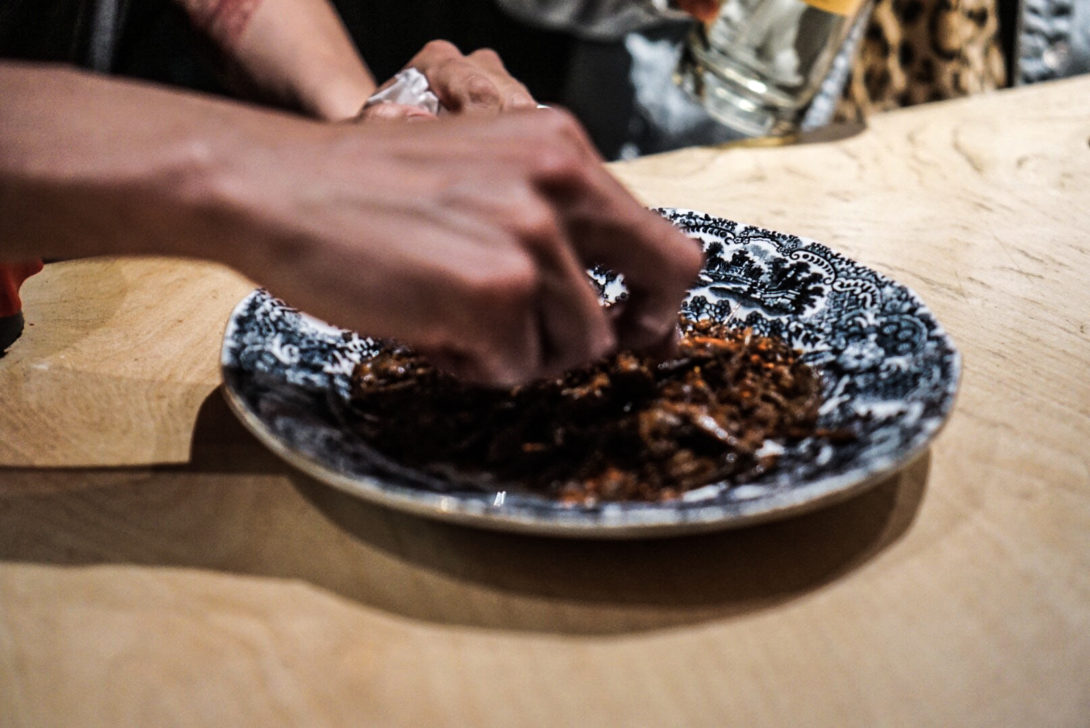Talent
Collective Edibles
A project by
Emily Whyman
- Profession
- Designer
- Project
- Collective Edibles Mealworm Incubator
- Based in
- Barcelona
- Platform Member
- Fab Lab Barcelona
- Works at
- Fab Lab Barcelona
About the project
How are we going to feed generations to come, and how we will feed ourselves in the coming decade? Collective Edibles is a project about food – and how to use food as a tool for communication. The global population is predicted to reach 9.7 billion in 2050 (Un.org, 2015). This burgeoning population and less available habitable space necessitates contemporary methods of food production and narratives which encourage a need for behavioural change. This project explores, articulates and links potential future methodologies of urban farming to shared food consumption within Barcelona. It delves into understanding the broken physical and philosophical link between food production and food consumption and why this has led to global polar malnutrition. In understanding this, it is therefore possible to alter behaviours for the pursuit of deliciousness. Essentially, it uses food, to talk about food. You could say it’s an exploration into – tuck in..
The Mealworm Incubator
The Mealworm Incubator design that you can see via the Wikifactory link in my profile is essentially a big house for your mealworms: it contains 4 drawers which will house each life cycle of the mealworms. It is one open-source design in the Collective Edibles project.
If you are interested in the more technical side of worm farming you may decide to do the electronics for the incubator. The electronics are not essential for small scale micro-farms, however, the data gathered is interesting to understand and compare potential variables, such as temperature and humidity, which would affect the worms. The repository will contain the files to create a temperature and humidity sensor. This can be done with an Arduino: if you do not have an Arduino, it is also possible to make and solder your own PCB – this takes a little longer, however has it’s own benefits. Once the sensor has been made, place the sensor in one of the boxes with the worms in. Unfortunately, you will not be able to take measurements of every box unless you link more than one sensor to your Arduino. The results will still be indicative of the rest of the boxes so there is no need to use more than one unless you want to delve a little more into the environmental data side!
You might be reading this kit and wondering why the heck you would want to start farming mealworms in the first place.. The question in fact is, why wouldn’t you farm mealworms?
Hopefully this will change your mind a little – mealworms are a great, low-cost method of protein production. Not only are they incredibly nutritious for you – containing a similar protein content to beef, more vitamin B12 than eggs, more fibre than your broccoli, amongst many other things. Mealworms, should deserve more respect based on their superfood profile (Finke, M., 2002). Moreover, if the Earth could communicate verbally in our human language, it would say they are also a superfood – mealworms require only 10% of land used for the production of beef (Oonincx DGAB, de Boer IJM., 2012). In terms of tantalizing your tastebuds, mealworms have an incredibly versatile flavour and satisfying crunch – recommended in a variety of different sweet treats and savoury delights. Don’t worry if a few things go wrong when you’re farming the worms – this is natural – Picasso was not a world-class famous painter from the first picture he drew. Farming the worms gives an insight into food production and 10 + points for doing good for the planet.




